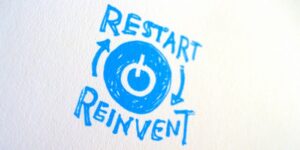
#TChat Recap: How Talent-Centric Recruiting Improves Business Outcomes
The balance of power is shifting in the employer/employee relationship. What does it mean for the future of work? The #TChat crowd weighs in

The balance of power is shifting in the employer/employee relationship. What does it mean for the future of work? The #TChat crowd weighs in

The first quarter of 2014 brought welcome optimism for some of the world’s major economies. On the face of things, it’s great news. However, businesses

The balance of power is shifting in the employer/employee relationship. What does it mean for the future of work? The #TChat crowd weighs in

The balance of power is shifting in the employer/employee relationship. What does it mean for the future of work? The #TChat crowd weighs in

The balance of power is shifting in the employer/employee relationship. What does it mean for the future of work? The #TChat crowd weighs in

The balance of power is shifting in the employer/employee relationship. What does it mean for the future of work? The #TChat crowd weighs in

The balance of power is shifting in the employer/employee relationship. What does it mean for the future of work? The #TChat crowd weighs in

It’s 9:15 a.m. and you’re just getting into the rhythm of your day. The phone rings, and on the other end of the line, one

The balance of power is shifting in the employer/employee relationship. What does it mean for the future of work? The #TChat crowd weighs in

Too often we hear the term “employee engagement” and think of it as corporate wide initiative led by HR. Or maybe it’s why we need

According to a recent Gallup study, worldwide, only 13% of employees are engaged at work. In a 142-country study on the State of the Global

The balance of power is shifting in the employer/employee relationship. What does it mean for the future of work? The #TChat crowd weighs in

The balance of power is shifting in the employer/employee relationship. What does it mean for the future of work? The #TChat crowd weighs in

The balance of power is shifting in the employer/employee relationship. What does it mean for the future of work? The #TChat crowd weighs in

The balance of power is shifting in the employer/employee relationship. What does it mean for the future of work? The #TChat crowd weighs in

It’s one thing to say you want top talent — but it’s another thing to make it happen. Here’s a glimpse at one proven method

The balance of power is shifting in the employer/employee relationship. What does it mean for the future of work? The #TChat crowd weighs in

Today’s global marketplace is fiercely competitive. But smart companies recognize their primary business advantage comes from within

Successful leaders understand the power of human nature. What do they know about behavior that others can learn?

What methods make sense in evaluating potential hires? The #TChat crowd shares wisdom from experience

If you want to know how people can contribute to your company, why not take a test drive? Wordpress co-founder Matt Mullenweg explains

How do you know if a candidate is really ready to take on a job? Testing may be the fastest path to a reliable answer.

New research indicates that employees tend to love their employers — but don’t feel it in return. What can we do about that? The #TChat crowd weighs in

How would you describe your ideal employer? Here’s one factor that many job seekers overlook — but it has potential to make all the difference.

After years of working closely with leaders in every kind of organization, Ted Coine opens up about a missing piece in the leadership toolkit.